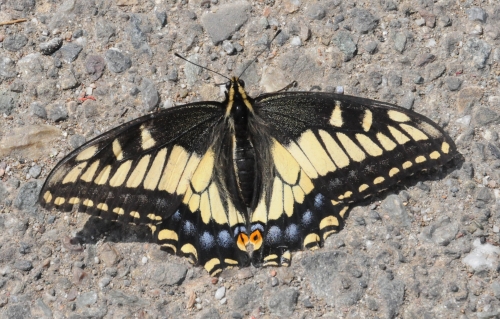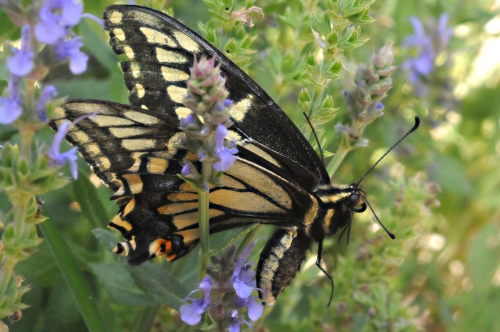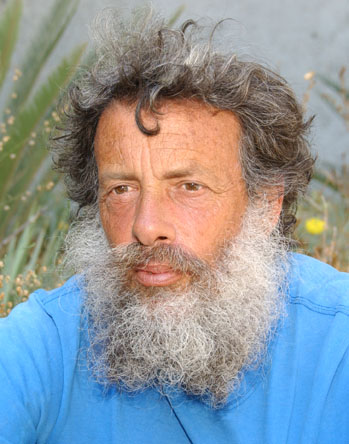- Author: Kathy Keatley Garvey
We netted the floundering California lady beetle (Coccinella californica) aka "lady bug," from our swimming pool.
She didn't look like the familiar lady beetle, reddish orange with black spots. One spot was all she had.
And little life left.
Then, slowly, miraculously, she opened her wings to dry out, looking somewhat like a drenched DeLorean with its doors flung open.
She reminded us of the nursery rhyme:
Ladybug! Ladybug!
Fly away home.
Your house is on fire.
And your children all gone.
All except one.
And that's little Ann.
For she crept under
The frying pan.
I don't know if she flew home. She definitely didn't creep under a frying pan.
But our little Hemiptera predator did live to see another day, and perhaps feast on another aphid or two.
Or a scale insect, mealybug or mite.
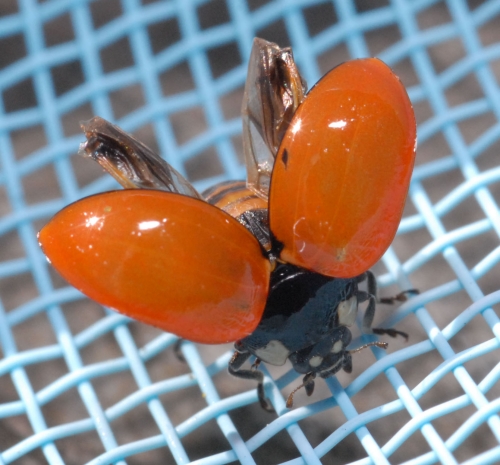
- Author: Kathy Keatley Garvey
Whew, that stinks!
If you've ever smelled a mosquito gravid trap, you know it's not heaven-scent. This isn't about the aroma of summer roses or the whiff of freshly baked cinnamon rolls or the fragrance of vanilla-laced skin cream.
No. This is something that stinks to high heaven. Probably low heaven, too.
It's s-o-o bad (how b-a-d is it?) that you just want to distance yourself from the stench: you hold your nose, mutter “P.U.” and make like a Lightening Bolt (Olympic gold-medal sprinter Usain Bolt).
Said UC Davis chemical ecologist Walter Leal: “It smells like a latrine."
So he and his researchers set out to find a synthetic mixture that attracts mosquitoes but is odorless to humans. And they have. Their mixture, containing the compounds trimethylamine and nonanal in low doses, lures Culex mosquitoes just as effectively as the current gravid trap attractants. But look, ma, no smell!
They did it with what Leal calls "reverse chemical ecology."
The results are published in the current edition of the Public Library of Science Journal or PLOS One.
This research could play a key role in surveillance and control programs for Culex species, which transmit such diseases as West Nile virus, encephalitis and lymphatic filariasis.
What are gravid traps? They're chemical- and water-infused traps, sometimes called oviposition traps or ovitraps. They're meant to attract blood-fed mosquitoes searching for places to lay their eggs. Scientists monitor these traps to determine the presence of West Nile-infected mosquitoes.
“The gravid traps are more important (than carbon-dioxide traps) for surveillance,” Leal said, “as they capture mosquitoes that have had a blood meal and thus, more opportunity to become infected.”
Leal said that another advantage of the gravid traps is that with the capture of one female mosquito, that eliminates not only her, but hundreds of her would-be offspring. “Each female mosquito has the potential to produce about 200 eggs, and she can have as many as five cycles. So when we capture a gravid mosquito, that can remove as many as 500 females.”
Piglets shown by the UC Davis School of Veterinary Medicine are a key attraction at the California State Fair, but bees are drawing a lot of attention, too. (Photo by Kathy Keatley Garvey)The compounds used in the research, Leal said, are “simple and inexpensive” and would be of great benefit “to not only us but third-world countries where Culex quinquefasciatus is a problem.” Piglets shown by the UC Davis School of Veterinary Medicine are a key attraction at the California State Fair, but bees are drawing a lot of attention, too. (Photo by Kathy Keatley Garvey)The researchers did preliminary field testing in Davis and Sacramento but when aerial sprays mitigated the levels of West Nile virus-infested mosquitoes, they set up traps in Recife, Brazil, a city endemic for lymphatic filariasis. Leal is a native of Brazil.
Other scientists involved in the study included UC Davis researchers Wei Xu, Yuko Ishida, Zain Syed, Nicolas Latte, Angela Chen and Tania Morgan; associate professor Anthony Cornel, associate professor of entomology at UC Davis and director of the Mosquito Control Research Laboratory, based at the Kearney Agricultural Center, Parlier; and Rosângela M. R. Barbosa and André Furtado of the Department of Entomology, Centro de Pesquisas Ageu Magalhaes-Fiocruz, Recife, Brazil.
Piglets shown by the UC Davis School of Veterinary Medicine are a key attraction at the California State Fair, but bees are drawing a lot of attention, too. (Photo by Kathy Keatley Garvey)(See more information on the UC Davis Department of Entomology Web site).

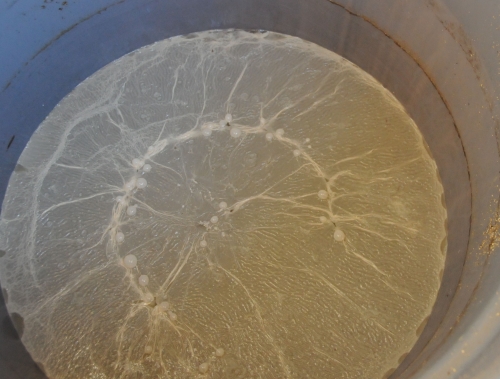
- Author: Kathy Keatley Garvey
As a child, Dennis Price loved to watch the honey bees. “I could sit and watch them all day,” he said.
He still does. Love the honey bees, that is.
And he never tires of watching them.
If you attended the California State Fair on Sunday, Aug. 17 or Saturday, Aug. 23, you probably saw the enthusiastic Davis resident, now a beekeeper, in the honeybee booth in the California Foodstyle building. He and his partner Karen Flores were handing out honey samples and answering questions about bees, especially about the bee observation hive where visitors could watch the queen bee, worker bees and drones.
“About one-fourth of them were afraid of the bees, but about one-half of them were as fascinated with bees as I am,” Price said.
Dennis Price is a new beekeeper. Since April. So far, his six hives have produced 81 pounds of honey. The samples he served were absolutely delicious. Liquid gold.
Price is a graduate of UC Davis, but not in entomology. “I used to play racquetball with Larry Godfrey (Extension entomologist at UC Davis), though,” he said.<
Price is a 1989 graduate of UC Davis (chemistry and toxicology) and now works for ESA Biosciences, a company based in Chelmsford, Mass. He's the Western regional account manager, traveling from a route from Seattle to Hawaii, but mostly throughout California.
And in his “spare” time, he keeps bees.
“Bees are so underappreciated and so ignored and they work so hard for us,” Price said.
Above his head in the California Beekeepers Association booth was a sign that read:
- The average honey bee makes just 1/2 teaspoon of honey during her lifetime
- Honey bees fly about 55,000 miles just to make one pound of honey. That's equal to 1.5 times around the world.
- One third of your diet is derived from insect-pollinated plants, and 80 percent of that is done by honey bees.
It used to be that newborn pigs (such as those below) hogged the attention of fairgoers at the California State Fair. They still do, but make way for the bees.
The bees are buzzing around the sunflowers in the garden section and they're making honey in the California Foodstyle Building.
And if you're like me, you'll go to the fair just to see the bees.
You have until Sept. 1 to check them out.
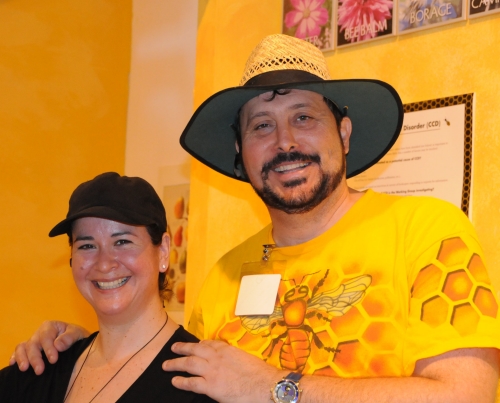

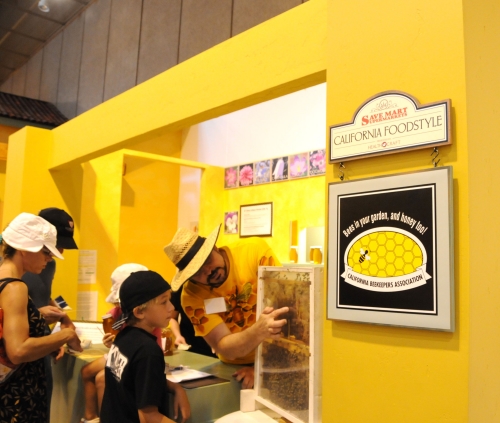

- Author: Kathy Keatley Garvey
Friday lite.
That's what it was.
But it was more than that, too.
Every year, Bruce Hammock, distinguished professor of entomology at UC Davis, wages a water balloon battle for faculty, researchers, graduate students, staff, family and friends.
It takes place on the lawn, north side of Briggs Hall, near his basement lab and offices. We like to kid around that he's located on the “garden level” of Briggs. When Hammock hosts Bruce's Big Balloon Battle at Briggs, it becomes the “water level.”
This year (Friday, Aug. 15) they filled 2500 water balloons and then threw them at one another. Every year when the water balloons are all gone, they empty the buckets—which really makes for some nice photos. I'm glad Bruce Hammock can be so accommodating!
“Nobody can beat Bruce Hammock at water balloons,” said former administrative assistant Jeanette Martin, who returned for the big balloon battle.
The Hammock lab works hard and plays hard.
Bruce Dupree Hammock just won the 2008 UC Davis Distinguished Teaching Award for Graduate and Professional Teaching; he was nominated for his "dedication to his students, his interdisciplinary thrust, and his scientific and professional career guidance."
“This award is one of the most prestigious granted on the UC Davis campus and recognizes consistent outstanding teaching and commitment to student success,” said Krishnan Nambiar, chair of the Academic Senate Distinguished Teaching Award Committee in a letter to Hammock nominator Michael Denison, professor of environmental toxicology.
Chemical ecologist Walter Leal, professor of entomology at UC Davis, described Hammock as an excellent teacher and mentor. “I can unequivocally tell you that teaching is Dr. Hammock's passion. He considers teaching the most important role of his university career...He motivates, encourages and inspires, molding a whole new generation of scientists who are discovering ways to benefit humankind.”
Hammock is a member of the National Academy of Sciences and holds a joint appointment in Cancer Research with the UC Davis Medical Center. He directs the National Institute of Environmental Health Sciences (NIEHS) Superfund Program on the UC Davis campus, as well as the National Institutes of Health (NIH) Training Program in Biotechnology, and the NIEHS Combined Analytical Laboratory.
In the last five years Hammock has hosted more than 40 postdoctoral fellows or senior scientists. He has helped train future entomologists, biochemists, engineers, chemists and biologists.
You could say he also trains them to be water warriors.
Make that water warriors, extraordinaire.
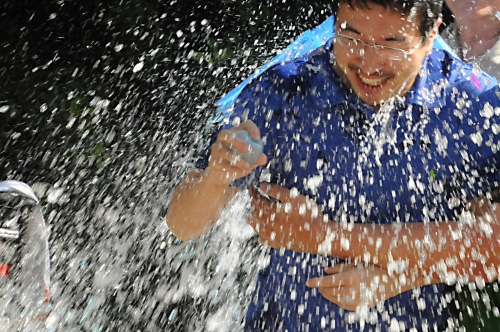
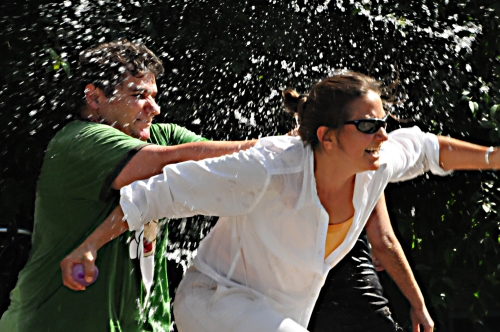
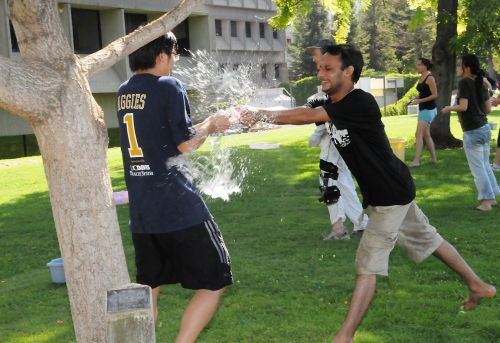

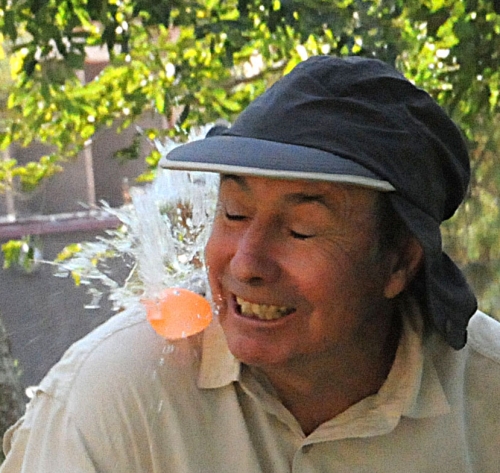
- Author: Kathy Keatley Garvey
Beauty isn't skin deep. It's wing deep.
The Anise Swallowtail butterfly dazzles you with its yellow stripes and blue dots. If it were a painting, it would be a Michelangelo. If it were music, it would be Vivaldi's "Spring." If it were a car, it would be a sleek Lamborghini.
But there it was, a bit of beauty in the otherwise-drab Berkeley marina parking lot. So, I did what all insect lovers do--I photographed it. (See photo below)
Arthur Shapiro, professor of evolution and ecology at UC Davis--and as brilliant as the butterflies he studies--knew exactly what it was. After all, he published his first paper on butterflies in 1962 at age 16.
“Papilio zelicaon, female,” he said.
Just like that.
Shapiro is the author of the newly published “Field Guide to Butterflies of the San Francisco Bay Area and Sacramento Valley Regions,” illustrated by Tim Manolis. In the book, published by the University of California Press, Shapiro discusses and identifies more than 130 butterfly species.
The book is as awesome as his Web site, his own butterfly world. His Web site spans more than three decades of research and observations.
Glad you asked.
When you were in school, you may have reared it in your classroom. It's easy to rear, Shapiro said, but don't provoke it. The caterpillar has “an eversible scent gland (the osmeterium) behind the head. It's yellow or orange and shaped like the letter 'Y' and if the beast is provoked, it releases a mist of butyric acid--rancid butter smell--which will hang in the air many minutes.”
The caterpillar can be a pest in cultivated citrus, but a minor pest.
The Anise Swallowtail is found in most of the western states. Its main hosts are members of the carrot family, Apiaceae. It also feeds on the rue family, Rutacease.
The carrot family includes anise, fennel, dill, celery, parsley, parsnips (I hate parsnips—I'm glad something likes them!) and Queen Anne's lace. The Anise Swallowtail even eats the extremely poisonous water hemlock (Cicuta) and poison hemlock (Conium) “without ill effects,” said Shapiro. “When Socrates drinks, everybody drinks,” he quipped.
This little ol' butterfly is also a famous “hilltopper,” Shapiro said. “In rugged topography, males and virgin females assemble on rocky unforested hilltops to mate--it's a butterfly 'singles bar.' The females do not return once mated, but the males come back day after day looking for action."
If you want to know more about butterflies, then Art Shapiro's “Field Guide” is a must-have for your collection.
And if you find an Anise Swallowtail in the Berkeley marina parking lot, it's mine.
